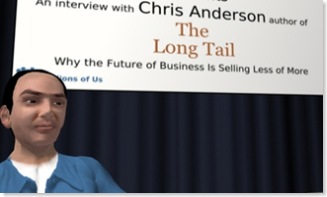The Frankenstein’s monster of the Universal Studios film was hideous. A product of an unholy experiment, it was gruesomely assembled, yet through a miracle of science walked the earth, wrecking havoc. Count Dracula, from the same studio at about the same time, was mysterious and elegant. This monster’s seductive powers were finely focused. Dracula came from a remote, distant land. And, like the heretofore Mary Shelley invention, wrecked his own considerable share of havoc. Guess which is MySpace and which is Facebook?
 And if you’re wondering who is winning the battle of Dracula vs. Frankenstein, well, it’s too early to tell. They are definitely using their differing powers differently, and with equal aplomb.
And if you’re wondering who is winning the battle of Dracula vs. Frankenstein, well, it’s too early to tell. They are definitely using their differing powers differently, and with equal aplomb.
It was exactly a month ago when Facebook announced it would open its platform to outside developers. This online social network certainly regards no site more of a competitor than MySpace. The move to a great extent was to blunt the loss of users over to that site.
It’s an important strategy. Facebook has only a quarter of the members as MySpace (28 million versus MySpace’s 108 million). How do you argue with that that kind of success? Or compete against these kind of numbers? If you’re Facebook, the answer is you reverse course.
In their game-changing move, Facebook chose to swing open the doors to their platform to all manner of third-party widgets and software. This Slate article explains how these applications individually amount to little, but cumulatively they can spell a huge advantage (thanks, Bryn, for the link):
None of the nearly 900 (and counting) programs released so far are particularly life-changing—among the most popular add-ons are a “Graffiti” program (downloaded by more than 3.3 million people as of this writing) that lets you doodle other people’s profiles and an “Honesty Box” that lets your friends say, anonymously, what they really think of you. Collectively, though, these programs are hugely significant. If the site figures out a smart way to deploy these mini applications, it will be more than just a social network. Facebook will turn into a do-everything site with the potential to devour the whole Internet.
Good move, Facebook. That had to smart. What would you do in response if you’re MySpace — a site that has been, after all, the anti-Facebook? MySpace has always been open to all comers, fertile soil for application developers — including YouTube videos, which are embedded in MySpace profiles by the millions.
So what do you do? You selectively compete against the very products you’ve allowed to thrive in your garden. Starting with YouTube, itself a threat. This week we learn that MySpace has improved their own embedded video product: MySpace TV.
The clearest damage that could come of this is to YouTube. And it’s a good thing, because YouTube is developing its own social network chops. But the move also shows a different approach to getting and keeping users: Don’t rely on others to produce your most popular applications. Instead, provide them yourself, so you can get traffic to both your own social media site and the site that feeds it.
Mind you, MySpace TV is no copy-cat of YouTube. Instead of trying to engage YouTube at its sweet spot — user-generated videos — MySpace TV focuses on professionally produced videos. Very smart.
It’s a characteristic move from a company that has so far behaved surprisingly shrewdly. Even a patchwork Frankenstein’s monster can display uncanny survival instincts.
To see an excellent face-off between Facebook and Myspace features, check out this recent evaluation of the two by our friends at Mashable.
 Does this mean we should all forget the Second Life “land rush” ever happened? I don’t think so.
Does this mean we should all forget the Second Life “land rush” ever happened? I don’t think so.